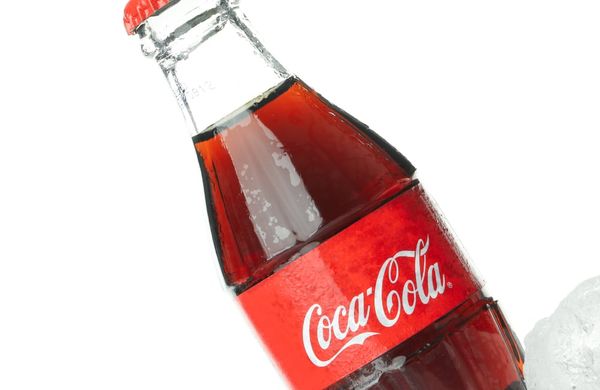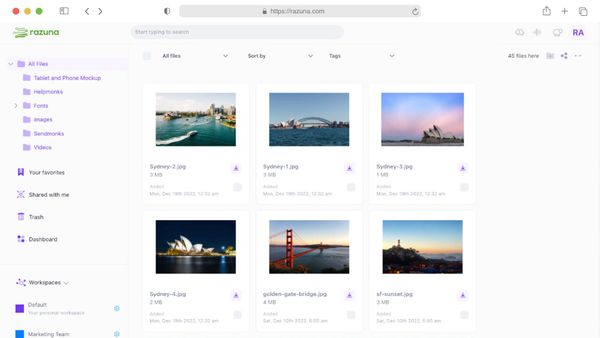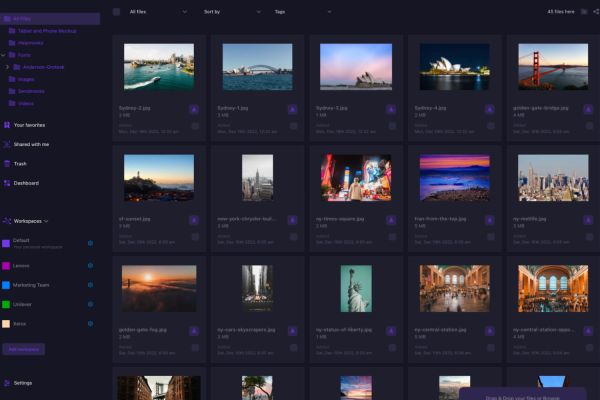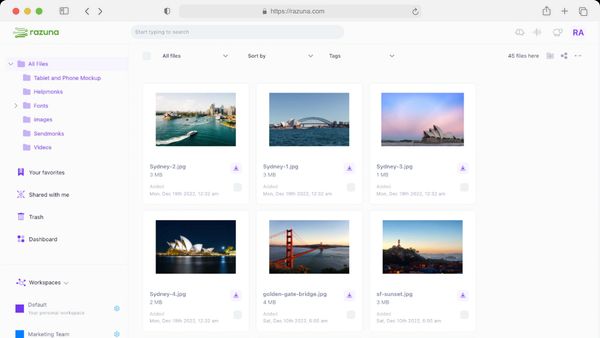
Announcing Collect+: Save and share everything
COLLECT+ is a productivity tool that helps you save and share everything you find on the web. It is built into the Razuna digital asset management platform.
Read nowHow do you measure the effect of your brand marketing efforts? If your answer is brand equity, you'd be correct.
Brand equity affects your brand's recognition and perceived worth. It can enhance your brand's public image, increase customer loyalty, and drive profits. It'll even reduce your marketing costs.
But what exactly is it and how can you build yours to enjoy these benefits? The answers you need are right here. Read on to discover what it is, the top strategies for creating it, and some real-world examples.
Brand equity is your brand's reputation, recognizability, and social value.
It refers to your brand's commercial value, based on consumers' perceptions, not the product or service itself. Your customers, and potential customers, form perceptions of your brand based on how easily they recognize it and what they know about it.
Why is it so important? This customer-oriented valuing of your brand can be shaped to drive awareness, sales, and revenue. Once you understand the power of positive brand equity, you can make it work for you.
Both these terms are estimates of a brand's worth, but they're not the same thing.
Brand equity has a significant impact on your brand's (and therefore your company's) performance. Yet it's not all that easy to calculate. Because it's based mostly on highly subjective factors, it's always an estimation and not a definite calculation.
Companies rely on customers' beliefs and perceptions about their brand to determine equity.
Brand value is the financial asset that the company records on its balance sheet. This makes it an easier estimation than brand equity, as you can arrive at your brand value by doing a market-based valuation.
Calculate the costs involved with building your brand. Consider your brand's future net earnings. Look at the sale price of similar brands. These are all powerful indicators of your brand value.
Positive brand equity offers some exciting benefits for any business. Here are the top three.
Positive brand equity creates a strong and favorable connection between your brand and your customers. When consumers perceive a brand in a positive light, they're more likely to develop a sense of loyalty.
By creating a bond that goes beyond functional benefits, you'll form emotional connections that deter the consumer away from competitors.
Loyal customers often make repeat purchases, increasing your sales profits. They recommend your brand and products to others. They'll also be more forgiving if something goes wrong in your public image.
New customers are important too for growing your brand. But to stay in the game, every business also needs a solid foundation of loyal, regular customers.
Are you prepared to spend more on a product or service that you believe is worth it? Chances are high that you would, and so would your customers. And with higher perceived worth comes the potential for premium pricing and profitability. This is one of the most important benefits for your long-term revenue.
To charge premium prices, you need consumers to view your products or services as top-tier. Why would they do that? Positive brand perceptions, of course. How they view and connect with your brand will influence their assessment of value.
The more recognizable you are, and the more perceived value consumers attribute to your brand, the better. It sets you apart from the rest. Positive brand equity gives you a competitive advantage in the marketplace.
This is especially noticeable when you compare similar products in the same niche but made by differing manufacturers. The one with an instantly recognizable brand will have better brand perceptions than a generic option without a well-known brand name.

Do you want to measure your brand equity? It's harder to measure than brand value, but it can be done. One of the most popular ways is through surveys. You can use these surveys for both your existing customers as well as samples of your target audience who haven't purchased from you yet.
These are the main factors to address when measuring your brand equity.
How aware are consumers (who are not existing customers) of your brand? Have they heard of it before, and if so, where did they hear about it? This will give you clues to your brand's reach, and also the best avenues for increasing it.
What do people think of when they see your brand? How does it make them feel? Examine the public perceptions of your brand's image, and check that it aligns with the brand story that you wish to promote. If it doesn't, your brand marketing team needs to revise its approach.
How loyal are consumers to your brand? This is one for your existing customers. Do your customers feel loyal to your brand, and does it move them to buy from you again? If brand loyalty is low, chances are you have low brand equity.
What do people think of when they see your brand name, logo, or products? When brand associations are positive, they drive repeated sales. When they are negative, sales slump. Brand associations are formed from the mental connection a customer makes between your brand and some outside factor.
Do consumers trust your brand? Even if they've never purchased from you before, but are aware of your product, they'll have an opinion on how trustworthy your brand is.
Evaluate the perceived quality of your products or services. Consumer trust is often tied to the perception of quality. High-quality offerings, combined with consistency and great customer service, are key to building and maintaining trust.
Creating positive brand equity is simpler to achieve than you might think. Just follow these six steps.
First, you need to understand your target audience so you can speak to their needs and preferences. Who are you providing your products and services for? How will this affect the type of marketing content you produce? Your marketing should speak to your audience on an emotional level.
Based on the audience you wish to target, segment your audience to narrow your focus. When you do that, you'll aim the right products and content at the right consumers. This will create stronger connections between your consumers and your brand.
Your brand identity is the visual, emotional, and cultural representation of your brand. It incorporates your logo, tagline, messaging, color scheme, and designs. It's what makes your brand recognizable and identifiable.
Establish a strong brand identity that is instantly recognizable, appealing, and engaging. Make sure you keep your brand identity and messaging consistent in all your marketing efforts. It should be unique and differentiated from other brands.
Deliver consistent brand experiences and your brand equity will soar. Consistency will establish your brand as trustworthy and reliable. Consumers love products (and therefore brands) that they feel they can rely on.
Emphasize producing quality products that are thoroughly tested and evaluated. Ensure that your products or services meet industry standards. And pair this dedication to quality with honest and reliable customer service.
If you think you have little control over your customers' perceptions, think again. They automatically form mental and emotional associations with your brand. It's up to you to ensure that they are positive.
Brand associations are heavily influenced by brand identity, marketing, product quality, and customer service. These are obvious areas to work on to increase positive associations. Don't overlook the psychological aspects of your brand assets, like your logo, design, and colors. They can affect people's moods and thus their associations with your brand.

To boost the public's perceptions of your company, brand name, products, and services, you need to market and promote them effectively. And for this, you need to have the best tools for communicating your messages.
A small investment in the right software and tools can bring you a huge return on investment down the line. Familiarize yourself with the best marketing strategies and the tools needed to achieve them. Give your team the tools they need to collaborate effectively and make every marketing campaign a success.
Monitor your brand equity through regular surveys and assessments. Measure it at regular intervals, as it will not necessarily remain constant. It takes work to get it high, and dedication to keep it there.
It's never too late to raise your brand's value in the hearts and minds of the public. By checking your brand perceptions regularly, you'll quickly know if something has changed, and be able to adapt your marketing efforts accordingly.
Need some inspiration? Here are three excellent real-world examples of positive brand equity.

When consumers select a product to purchase, the initial driver is not the product itself, but rather how it builds the consumer's sense of self. This is well illustrated by the brand Apple.
The home of iPhones and iPads, Apple appeals to people who see themselves as innovative and forward-thinking. Combine this brand identity with sleek, user-friendly products, and you have a winning combo for brand equity.
Consumers' perceptions of the brand as innovative feed this sense of identity. Despite carrying higher price tags than similar products, Apple fans consistently pay these higher prices because they see the brand as ‘worth it'.
This is one of the best examples of how a premium perception can justify a premium price.

Coca-Cola is the world's most popular soft drink. It's a fantastic example of high brand equity and the power of iconic branding. Coca-Cola has launched multiple marketing and advertising campaigns through the years.
Although there have been minimal changes, the brand's logo design and colors are recognizable throughout the world. Another thing this brand has done right is positive brand associations. Coca-Cola advertisements have always driven home a message of happiness, togetherness, and unity.
The ‘Share a Coke' message underlies all of their marketing efforts and creates positive emotional associations.

Starbucks is one of the world's most recognizable coffee brands. Is it because their coffee is better than everyone else's? Or because they offer good value for money? No, this doesn't appear to be the case. What Starbucks is known for, though, is its focus on consumers' need to ‘belong'.
They focus their advertising, and indeed the way they operate their stores, to meet that need. They emphasize how coffee culture can give people who love coffee, a place they belong. It's a place where they can hang out with like-minded friends, and make new ones.
Starbucks also differentiates itself from its competitors by writing its customers' names on their to-go coffee cups. This forges a sense of personal and emotional connection between the consumer and the brand. It makes each consumer feel special. It also creates free advertising for the brand, as many customers will post a picture of their coffee cup on social media.
Your brand equity is a measurement of your brand's value. Like brand value, it'll have far-reaching implications for your company's success, but it's based on more subjective factors like consumers' perceptions and opinions. Yet it's still possible to influence it through targeted marketing.
To drive higher brand equity, you don't need more marketing, you need better marketing, with the right software. To boost your marketing efforts, look no further than Razuna. Our digital asset management platform has all you need for branding, marketing, content collaboration, and more.
Register your free Razuna account today, and start building the brand equity you deserve!

COLLECT+ is a productivity tool that helps you save and share everything you find on the web. It is built into the Razuna digital asset management platform.
Read now
These 18 tips for efficient photo organization are the best strategies for every marketer. Learn how to keep your digital images organized and accessible.
Read now
A digital asset library software organizes all digital assets in one place. But which one is the best? Here are the top 8 asset library software choices.
Read now
The latest update to our Digital Asset Management system, is focused on giving more power and flexibility to control user permissions, file, and folder access.
Read now
(each free accounts comes with 500 GB space)
